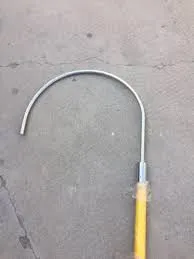
-
 Afrikaans
Afrikaans -
 Albanian
Albanian -
 Amharic
Amharic -
 Arabic
Arabic -
 Armenian
Armenian -
 Azerbaijani
Azerbaijani -
 Basque
Basque -
 Belarusian
Belarusian -
 Bengali
Bengali -
 Bosnian
Bosnian -
 Bulgarian
Bulgarian -
 Catalan
Catalan -
 Cebuano
Cebuano -
 Corsican
Corsican -
 Croatian
Croatian -
 Czech
Czech -
 Danish
Danish -
 Dutch
Dutch -
 English
English -
 Esperanto
Esperanto -
 Estonian
Estonian -
 Finnish
Finnish -
 French
French -
 Frisian
Frisian -
 Galician
Galician -
 Georgian
Georgian -
 German
German -
 Greek
Greek -
 Gujarati
Gujarati -
 Haitian Creole
Haitian Creole -
 hausa
hausa -
 hawaiian
hawaiian -
 Hebrew
Hebrew -
 Hindi
Hindi -
 Miao
Miao -
 Hungarian
Hungarian -
 Icelandic
Icelandic -
 igbo
igbo -
 Indonesian
Indonesian -
 irish
irish -
 Italian
Italian -
 Japanese
Japanese -
 Javanese
Javanese -
 Kannada
Kannada -
 kazakh
kazakh -
 Khmer
Khmer -
 Rwandese
Rwandese -
 Korean
Korean -
 Kurdish
Kurdish -
 Kyrgyz
Kyrgyz -
 Lao
Lao -
 Latin
Latin -
 Latvian
Latvian -
 Lithuanian
Lithuanian -
 Luxembourgish
Luxembourgish -
 Macedonian
Macedonian -
 Malgashi
Malgashi -
 Malay
Malay -
 Malayalam
Malayalam -
 Maltese
Maltese -
 Maori
Maori -
 Marathi
Marathi -
 Mongolian
Mongolian -
 Myanmar
Myanmar -
 Nepali
Nepali -
 Norwegian
Norwegian -
 Norwegian
Norwegian -
 Occitan
Occitan -
 Pashto
Pashto -
 Persian
Persian -
 Polish
Polish -
 Portuguese
Portuguese -
 Punjabi
Punjabi -
 Romanian
Romanian -
 Russian
Russian -
 Samoan
Samoan -
 Scottish Gaelic
Scottish Gaelic -
 Serbian
Serbian -
 Sesotho
Sesotho -
 Shona
Shona -
 Sindhi
Sindhi -
 Sinhala
Sinhala -
 Slovak
Slovak -
 Slovenian
Slovenian -
 Somali
Somali -
 Spanish
Spanish -
 Sundanese
Sundanese -
 Swahili
Swahili -
 Swedish
Swedish -
 Tagalog
Tagalog -
 Tajik
Tajik -
 Tamil
Tamil -
 Tatar
Tatar -
 Telugu
Telugu -
 Thai
Thai -
 Turkish
Turkish -
 Turkmen
Turkmen -
 Ukrainian
Ukrainian -
 Urdu
Urdu -
 Uighur
Uighur -
 Uzbek
Uzbek -
 Vietnamese
Vietnamese -
 Welsh
Welsh -
 Bantu
Bantu -
 Yiddish
Yiddish -
 Yoruba
Yoruba -
 Zulu
Zulu


Nov . 22, 2024 05:24 Back to list
lever block 3 ton price
Understanding the Price Dynamics of Lever Block 3 Ton
Lever blocks are essential tools widely used in various industries for lifting and pulling heavy loads. Among these, the 3-ton lever block stands out due to its versatility and practicality. When it comes to pricing, several factors influence the cost of a lever block, including manufacturing quality, brand reputation, and market demand. This article aims to delve into the details surrounding the pricing of a 3-ton lever block and offer insights on how consumers can make informed purchasing decisions.
Quality and Construction
The construction quality of a lever block is paramount. High-quality lever blocks are usually made from durable materials such as high-grade steel, which can withstand significant stress and strain. This durability ensures that the lever block operates efficiently over an extended period, reducing the likelihood of failure. Consequently, lever blocks constructed from superior materials typically carry a higher price tag. For instance, brands known for their reliability, such as Yale or Columbus McKinnon, often command higher prices compared to lesser-known manufacturers. While it might be tempting to opt for the cheapest option, investing in a quality lever block can lead to long-term savings by minimizing repair and replacement costs.
Brand Influence on Pricing
Brand reputation plays a significant role in the pricing of lever blocks. Established brands often have a history of producing reliable and safe lifting equipment, which can justify a premium price. Consumers tend to trust well-known brands because of their proven track record. In contrast, lesser-known brands may offer lower prices, but without a good reputation, potential buyers must weigh the risks of quality and safety failure. Therefore, when considering the price of a 3-ton lever block, it is crucial to assess the brand's reliability and the experiences of previous customers to make a sound investment.
lever block 3 ton price

Market Demand and Supply
The market dynamics of supply and demand can significantly influence the price of lever blocks. In times of heightened economic activity, the demand for lifting equipment may surge, leading to increased prices. Conversely, in a downturn, prices might drop due to reduced demand. Seasonal factors can also come into play; for example, construction and manufacturing sectors might see more projects in warm months, leading to a spike in demand for these tools. Buyers should stay aware of these market trends, as timing a purchase during a price dip can lead to considerable savings.
Additional Costs to Consider
When purchasing a lever block, consumers should also take into account potential additional costs, such as shipping fees or installation charges. Moreover, it is advisable to check if the lever block comes with a warranty, as this can protect against unforeseen failures and offer peace of mind. Investing in a block with a solid warranty might reflect a manufacturer's confidence in their product's durability.
Conclusion
In summary, the price of a 3-ton lever block is influenced by various factors, including quality, brand reputation, market supply and demand, and potential additional costs. By thoroughly assessing these elements, consumers can make informed decisions that will ultimately save them money and ensure they acquire reliable lifting equipment. As industry needs evolve and technology advances, staying informed about market trends and product developments will empower buyers to select the best lever block for their specific requirements. Whether in construction, manufacturing, or warehousing, a judicious choice will facilitate efficiency and safety in lifting operations.
Latest news
What Are Construction Tools and How Are They Used?
NewsJul.11,2025
Professional-Grade Duct Rodding Tools for Superior Cable Installation
NewsJul.11,2025
Enhancing Safety and Efficiency with Modern Hot Stick Solutions
NewsJul.11,2025
Empowering Cable Installation with Advanced Rodder Solutions
NewsJul.11,2025
Elevate Your Cable Installation Projects with Cable Pulling Tools
NewsJul.11,2025
Efficient Cable Handling Solutions: Cable Rollers for Sale
NewsJul.11,2025











